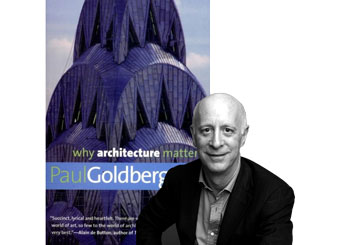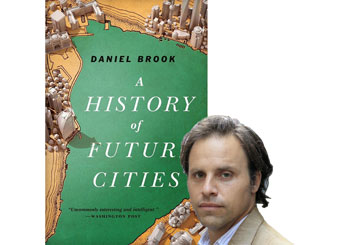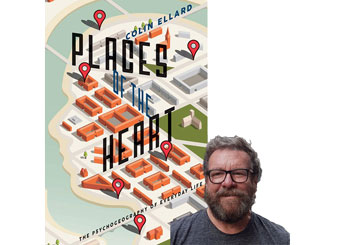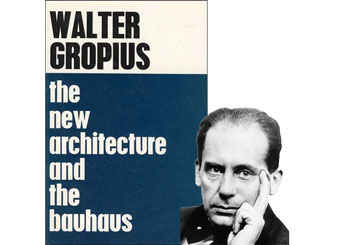
The influence of the urban environment that envelopes us daily often eludes most people. Rarely ever does someone stop by to appreciate a minimalistic bust stop, a particularly elegant old portico, or any other element of the city they live in. Since you clicked on this article, chances are you’re ripe and ready to enter the majestic world of architecture. For concentrated knowledge coming from renowned masters of the craft, hop right into this list.
Why Architecture Matters by Paul Goldberger

Paul Goldberger, an architecture columnist for New Yorker and Vanity Fair and a Pulitzer Prize winner, delivers unrivaled explanations to the questions he poses in this book. The work itself is fairly eclectic: the author’s subjective experiences of being immersed in various architectural environments are coupled with practical reasoning on geometric shapes in architecture and the efficient use of multi-story facilities. Goldberger also contemplates the history of architecture and its influence on the urban environment and the question about the relationship between the functionality and aesthetics of a building. Thus, Why Architecture Matters is not just a compendium of answers laymen may have about architecture and its purpose – it’s also a good starter for aspiring young architects.
A History of Future Cities by Daniel Brook

In A History of Future Cities, Daniel Brook explores four urban agglomerations that grew to contain the most advanced, new, and bold ideas in architecture. St. Petersburg, Mumbai, Shanghai, and Dubai are the cities where spectacular breakthroughs took place, from stagnant to advanced, from conservative to cosmopolitan. The iconic architecture of these cities embodies such paradigm shifts – whether it’s a luxurious palace imitating the most grandiose churches of Europe, a block of flats erected from local limestone, or a copy of a skyscraper from another country that is more impressive than the original. It is a fascinating architectural guide to the ambitions, aspirations, and hopes of these four metropolitan areas.
Places of the Heart: The Psychogeography of Everyday Life by Colin Ellard

Colin Ellard explores the impact that the environment has on a person. In his book, he asks the question of how buildings make us feel and perceive the surrounding reality in different ways. For example, why do we feel uncomfortable in a forest of artificial plants, no matter how skillfully they are made and no matter what neural network controls them? Why are rats that live in rat houses smarter than those that live in shoeboxes? How can a building contribute to our faith in God? These and many other questions are explained in Ellard’s impressive work. If you have no clue what psychogeography is, go check it out.
A Pattern Language: Towns, Buildings, Construction by Christopher W. Alexander

Christopher W. Alexander believes that the best buildings are conceived by ordinary people, not prominent architects. Therefore, the design of the house should not be entrusted to a hired specialist but left to the discretion of the owner. It is better to entrust the city park to the area’s residents, not to a visiting designer. A Pattern Language contains hundreds of rich and informative articles that reveal basic building techniques and contemplate the interaction of elements within a holistic environment. You will learn how to properly design sports facilities, pedestrian crossings, maternity hospitals and spaces for teens, how to arrange the lighting at home properly, shelves in the living room, and a child’s playing area. A Pattern Language is a trove for an enterprising urbanist or an enthusiastic householder, which, according to the author, are essentially the same.
The New Architecture and the Bauhaus by Walter Gropius

It is absolutely impossible to avoid mentioning Bauhaus whenever architecture is discussed. The founder of the greatest architectural school collected his articles over thirty years in one volume, published in 1955. Most of them depict homogeneous ideas – the search for a single set of rules that would reflect the spirit of the time and meet human needs; exploring creativity in everyday life and the importance of a designer and architect; the concept of self-regulation of the city and the preservation of its “human” face. An entire chapter is devoted to housing construction, and some of Gropius’ ideas are still applied in metropolitan areas like London and New York.
Become an Architect of Your Life
I sincerely hope these books will spur your interest in architecture – a whole universe of shape, color, and purpose lies out there. You don’t need to rush to the nearest construction store to find practical application to the ideas you will learn. Instead, look around, and you will instantly see the objects in your dwelling that could be moved or discarded completely. Begin transforming your living space today and expect it to improve your quality of life tomorrow.





